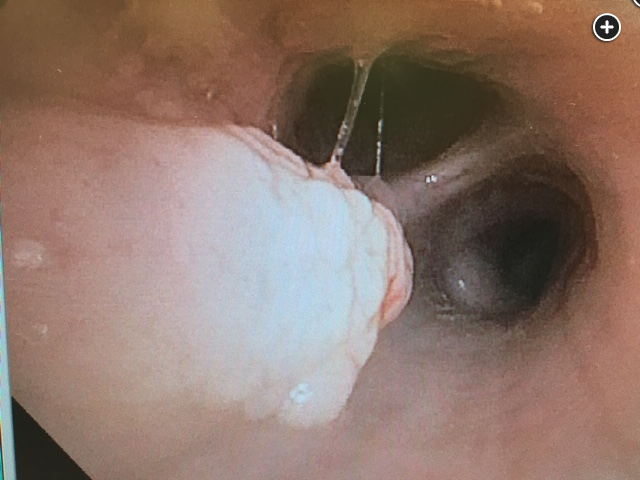bronchial granular cell tumors are benign endobronchial tumors
- related: lung mass and cancer
- tags: #literature #pulmonology
Links to this note

Ninety percent of tracheobronchial tumors in adults are malignant. Bronchial granular cell tumors (GCT) are rare and are mostly benign.
GCTs more commonly originate from the tongue and skin but have also been noted in the breast and esophagus. Less than 2% of extrapulmonary GCTs are malignant, and the lung can be a site of distant metastasis.
GCTs tend to develop between the third and fourth decades of life. Immunohistochemical staining is always positive for the S-100 protein; vimentin and PAS are often positive as well, supporting a neural origin of these tumors.
In the lung, most lesions are solitary and have been found within the trachea or a mainstem bronchus (Figure 1). Patients may be asymptomatic or present with cough, hemoptysis, chest pain, dyspnea, localized wheezing, recurrent pneumonia, or atelectasis, depending on the tumor size. Chest radiographs may be clear or show a nodule or bronchial obstruction with distal atelectasis. One series reviewed 20 cases and found that 53% presented with radiographic findings of bronchial obstruction, while 47% were incidental findings, as in this case. Most GCTs grow slowly, along muscle fibers, fibrous septa, and nerve sheath bundles. Treatment of bronchial GCT is not clearly defined. Intervention is probably necessary only in patients with local symptoms due to obstructed bronchi. Surgical resection is indicated if there is invasion of the tracheal wall. Otherwise, Nd:YAG laser and electrocautery have been shown to be effective.
There is no clear association with HIV disease.